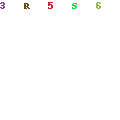
Thursday's Therapy
TRAUMA Therapy Toolbox
Guided Imagery:
Why Psychotherapy's "Talking Cure" Doesn't Always Work
in Child-Loss Grief and Trauma
~Belleruth Naparstek
with A Guided Imagery Sample
Rebalancing Biochemistry
Trauma survivors experience extreme swings in their biochemistry, from the jolts of cortisol, epinephrine, and norepinephrine that accompany flashbacks, nightmares, and intrusive memories, to the body's built in pharmacy of relaxants and endogenous opioids. Most of the time the body rebalances on its own after a traumatic event, returning to normal homeostatic business as usual within a few weeks or months.
Most people, however, experience at least several weeks immediately following a traumatic event when their systems are stressed and out of balance, and when cortisol levels are significantly, abnormally elevated. This is the biochemical counterpart to feeling
- anxious,
- hypervigilant,
- angry,
- tearful,
- panicky
- upset,
- irritable,
- fearful,
- rageful, or
- terrified.
Should these symptoms become chronic over several years, the survivor runs the paradoxical risk of then chronically underproducing cortisol, with depressed levels that are punctuated now and then by occasional alarm states that shoot it through the roof. Suppressed cortisol is usually associated with
- depression,
- numbness,
- joylessness,
- emotional flatness,
- inaccessibility,
- fatigue,
- listlessness,
- dissociation, and
- disconnection.
When chronically dysregulated stress hormones infuse the bloodstream for an extended period of time, they can wear away
- heart muscle,
- block arteries,
- create muscle pain,
- initiate immune and
- autoimmune problems, and
- shrink specific areas of the brain.
The Right-Brain Connection
Brain development expert Bruce Perry has studied how a traumatized brain is compelled to train its focus away from language and verbal content, and to fix instead on nonverbal danger cues--
- body movements,
- facial expressions,
- tone of voice and the like,
searching for threat-related information.
Cognition and behavior are mediated by the more primitive parts of the brain--the brain stem and midbrain--at the expense of abstract thinking and the absorption of language and ideas.
Only when sufficiently calmed can attention be focused on ideas and the meaning of words.
This is why interventions that are based on a strictly cognitive, problem-solving approach cannot impact terror-driven behavior.
The primitive brain and midbrain cannot process cognitive solutions aimed at the higher cortical functions.
But imagery, with its
- calming voice tones,
- soothing music and
- symbolic representations of safety,
can settle down hypervigilant brain functioning and allow the higher brain to get back to doing its job.
~Bellaruth Naparstek, excerpts from
Invisible Heroes: Survivors of Trauma and How They Heal
*****
Below is an example of guided imagery by the renowned trauma expert Belleruth Naparstek for you to experience the impact of relaxing, meditating, and imagining sweet healing thoughts that are guided by a very gentle voice of a well-trained trauma therapist. May it bring you some peace today:













































No comments:
Post a Comment